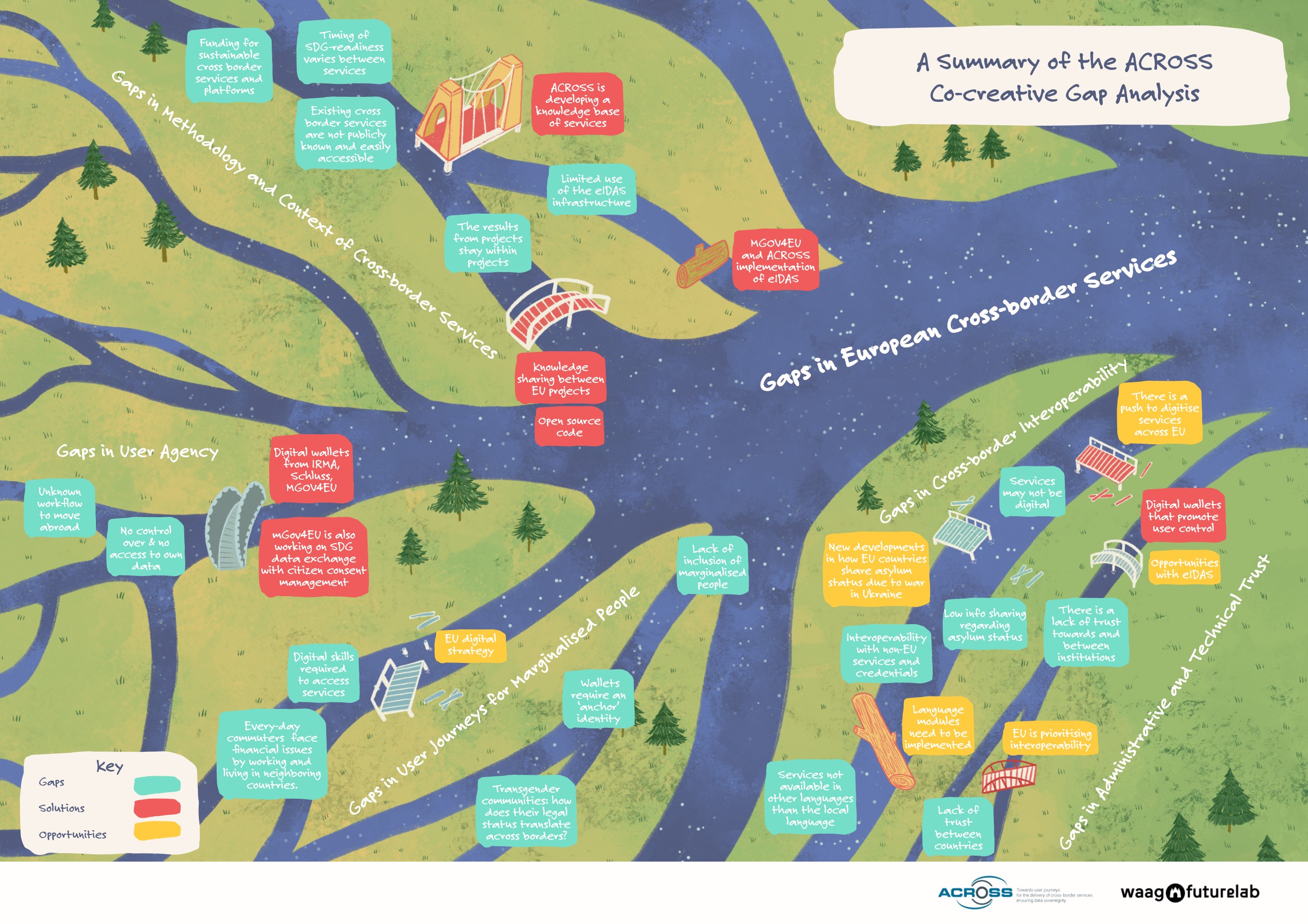Methodology
- Mapping of European Cross-border initiatives:
- eIDAS
- The Single Digital Gateway (SDG) and Your Europe portal
- European Student Card initiative
- Desk research
- Inventory of cross-border services offered in a country
- Categorization of each service by criteria: type of end users; level of readiness of integration with European Cross-border initiatives; type of service (informational, technical); language options; availability (residents only, non-residents, both); stakeholders involved in the provision of service.
- Validation
- Interviews with end-users
- Synthesis and prioritization of gaps
- Hierarchization of gaps
- Clustering of gaps
- Second round of Validation
- Technical workshop with key-stakeholders (researchers, professionals who work with European migration and cross-border services).
- Analysis of session outcomes
- Session conclusions
- Mapping of the gaps

Gap analysis of digital public cross-border services
The main gaps and challenges identified in the context of cross-border services revolve around the development of a user-friendly and comprehensive technical infrastructure. The primary gap is the lack of an effective technical infrastructure, which hinders the provision of user-friendly digital cross-border services. This gap is further divided into two aspects: the machine-to-machine gap and the machine-to-user gap. The machine-to-machine gap emphasizes the need for open and interoperable systems to enable data sharing and protect users' personal data. This includes addressing issues related to protocols, APIs, datasets, service naming, and central data exchange tools. The machine-to-user gap highlights the importance of placing users at the centre of service design, addressing their specific needs and ensuring inclusivity, especially for marginalized users who might be hindered in their use of the platform due to external factors.
Cross-border services risk perpetuating and exacerbating inequalities, in part due to the complexity in accounting and designing for many diverse potential users. Certain gaps threaten to stop a cross-border moving process altogether, such as not having an anchor for verified identity or lacking the digital literacy or hardware needed to access digital services. Such gaps may particularly affect people who are in urgent need to cross a border, and can exclude them from taking necessary steps like opening bank accounts, finding housing, or accessing other cross-border services.
Another key challenge is the issue of (de)centralization. Certain aspects of cross-border services are overly centralized, leading to disparities in service requirements across EU countries, causing confusion for citizens. There is a lack of a clear central checklist or workflow for moving across borders, leaving individuals uncertain about the steps they need to take. Authentication issues arise due to the absence of a single point of sign-on across different countries. Centrally held personal data, whether by private entities or governments, results in a loss of control over personal data and digital identity. The project also highlights concerns related to privacy, including data minimization, lack of transparency regarding data use, and forced consent, which all contribute to users' loss of control over their personal information. Moreover, the project underscores the challenges faced by individuals at the margins, who may encounter exclusion and increased points of exposure during the cross-border movement. Lastly, the usability and technical completeness of the existing infrastructure are identified as a significant challenge, including language and bureaucratic gaps and issues with system usability, which hinder the smooth process of moving across borders.
In summary, the main gaps and challenges in the ACROSS project involve the need for a robust and user-centric technical infrastructure, addressing (de)centralization, ensuring privacy and data control, and making cross-border services accessible to all, particularly those with unique circumstances.
Cross-border service gaps
|
|
|
|
|
|
|
|
|
|
|
|
|
|
|
|
|
Developed by:
Waag

